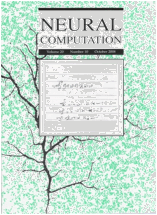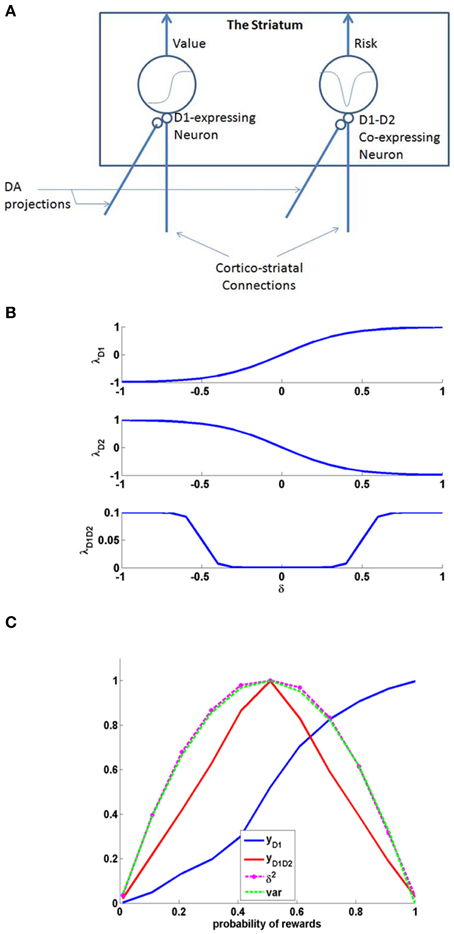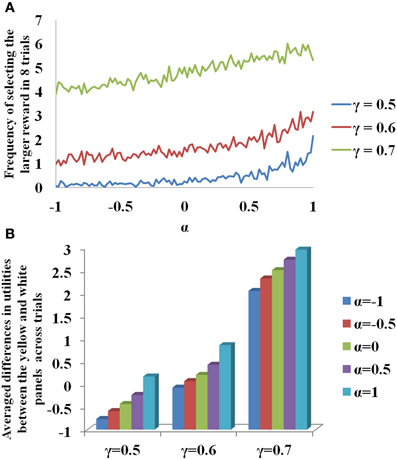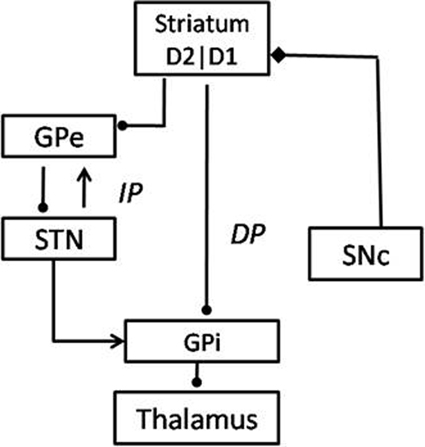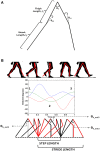Basal Ganglia
BG in reaching movements
We modeled the role of BG in driving reaching movements. Learning is described using RL. Under dopamine-deficient conditions the model exhibits PD motor symptoms like tremor, bradykinesia and undershoot.
K.N. Magdoom , D. Subramanian, V.S. Chakravarthy, B. Ravindran, Shun-ichi Amari. N. Meenakshisundaram, Modeling Basal Ganglia for understanding Parkinsonian Reaching Movements, Neural Computation, February 2011, Vol. 23, No. 2, Pages 477-516.
PD handwriting
Inspired by Hollerbach’s ‘oscillator theory of handwriting’ we developed a model of handwriting generation that consists of a trainable network of oscillators.
G. Gangadhar, D. Joseph, V.S. Chakravarthy, "An oscillatory neuromotor model of handwriting generation," International Journal of Document Analysis and Recognition, Vol. 10, No. 2, November 2007.
The above model of handwriting generation was integrated with a model of BG, which was further modified to produce a model of Parkinsonian handwriting. The model exhibits features of PD handwriting like micrographia and high velocity fluctuations. But the model is not described using RL.
G. Gangadhar, D. Joseph, V.S. Chakravarthy, Understanding Parkinsonian Handwriting using a computational model of basal ganglia, Neural Computation, 20, 1-35 (2008). (cover page article)
Predictions of the above-mentioned PD handwriting model were confirmed by data from real PD patients.
Garipelli Gangadhar, Denny Joseph, A.V. Srinivasan, Deepak Subramanian, Shiva Keshavan, V. Srinivasa Chakravarthy, A computational model of Parkinsonian handwriting that high lights the role of the indirect pathway in the basal ganglia. Human Movement Science, 2009 Oct;28(5):602-18.
BG in saccade generation
Modeled the role of BG in saccade generation. Performance of the model is evaluated on a set of tasks such as feature and conjunction searches, directional selectivity and a successive saccade task. Behavioral phenomena such as independence of search time on number of distractors in feature search and linear increase in search time with number of distractors in conjunction search are observed. It is also seen that saccadic reaction times are longer and search efficiency is impaired on diminished BG contribution, which corroborates with reported data obtained from Parkinson’s Disease (PD) patients.
R.Krishnan, S. Ratnadurai, D. Subramanian, V.S. Chakravarthy, M. Rengaswamy, Modeling the role of Basal Ganglia in Saccade Generation: Is the Indirect Pathway the Explorer?, Neural Networks, Volume: 24, Issue: 8, Pages: 801-813, 2011.
PD speech
Comparative analysis of speech samples elderly PD patients showed that the patients have lesser variability in fundamental frequency (Fo), and intensity, while having greater mean syllable duration and pause percentage compared to age-matched controls. (work in progress)
Birdsong generation
Songbirds like the zebra finch have a BG homolog called the Anterior Forebrain Pathway (AFP), known to be involved in song learning and generation. We model this system using a network of oscillators trained by RL. The song produced by the network under conditions of dopamine-deficiency resembles real birdsong under PD-like conditions.
Maya M., Chakravarthy V. S., Ravindran B., An Oscillatory neural network model for birdsong learning and generation: Implications for the role of Dopamine in Song Learning, International Journal of Mind, Brain and Cognition, 2012.
Spatial navigation
A computational neural model that describes the competing roles of Basal Ganglia (BG) and Hippocampus (HC) in spatial navigation is developed. . The proposed model describes the experimental results of (Devan& White 1999), a lesion-study that investigates the competition between cue-based and place-based navigational systems. Under conditions of reduced dopamine, the model exhibits increased escape latencies analogous to MPTP model rats navigating a water maze.
Deepika Sukumar, V. Srinivasa Chakravarthy, A Computational Neuromotor Model of the Role of Basal Ganglia and Hippocampus in Spatial Navigation, International Conference on Artificial Neural Networks (ICANN2010), Thessaloniki, Greece, September 15-18, 2010.
DSukumar, D., Rengaswamy, M., and Chakravarthy, V.S. (2012). Modeling the contributions of Basal ganglia and Hippocampus to spatial navigation using reinforcement learning. PloS one 7, e47467
BG and serotonin
Clinical investigations were combined with computational modeling to explore whether impulsivity in PD patients on medication may arise as a result of abnormalities in risk, reward and punishment learning. Studies showed that computational modelling can be used as a valuable tool for understanding and interpreting clinical data, and also to predict the onset of behavioral changes during disease progression.s
P. P. Balasubramani, V. S. Chakravarthy, M. Ali, B. Ravindran, and A. A. Moustafa, "Identifying the basal ganglia network model markers for medication-induced impulsivity in Parkinson's Disease patients," PloS one, vol. 10, p. e0127542, 2015
The detailed network model of the BG was proposed to demonstrate the joint contributions of DA-5HT in risk and reward-punishment sensitivity. Ours is the first model that accounts for the computational possibilities of co-expressing D1R-D2R MSNs, and describes how DA and 5HT mediate activity in these classes of neurons. The model predicts that optimizing 5HT levels along with DA medications might be essential for improving the patients' reward-punishment learning deficits.
P. P. Balasubramani, V. S. Chakravarthy, B. Ravindran, and A. A. Moustafa, "A network model of basal ganglia for understanding the roles of dopamine and serotonin in reward-punishment-risk based decision making," Frontiers in Computational Neuroscience, vol. 9, 2015
A risk based decision making integrated Reinforcement Learning (RL) model was proposed to depicts the roles of dopamine (DA) and serotonin (5HT) in Basal Ganglia (BG). The RL model reconciles several existing theories of 5HT and DA in the BG.
P. P. Balasubramani, V. S. Chakravarthy, B. Ravindran, and A. A. Moustafa, "An extended reinforcement learning model of basal ganglia to understand the contributions of serotonin and dopamine in risk-based decision making, reward prediction, and punishment learning," Frontiers in computational neuroscience, vol. 8, 2014
RL-based BG models pay nearly an exclusive attention to dopamine, though other neuromodulators are known to influence BG function. We developed a model of the role of serotonin in BG function. The model reconciles several existing theories of serotonin vis a vis BG.
Pragathi Priyadharsini, B. Ravindran, VS Chakravarthy, Understanding the role of Serotonin in Basal Ganglia through a unified model, International Conference on Artificial Neural Networks (ICANN2012), Lausanne, Switzerland, 11-14 September, 2012.
BG and Precision grip
A computational model of Precision Grip (PG) in PD conditions was proposed where grip force generation is modelled through action selection. The proposed model is able to account for the PG results from normal and PD patients accurately.
Gupta, A., Balasubramani, P.P., and Chakravarthy, S. (2013). Computational model of precision grip in Parkinson's disease: A Utility based approach. Frontiers in Computational Neuroscience 7
PD patients (both ON and OFF medication) show significant differences in precision grip performance compared to normal controls. Our objective is to understand this difference using both modeling and experimental approaches.
Ankur Gupta, Manikanta Avinash, Deepa Kandaswamy, Muthukumar Murthy, Suresh R Devasahayam, Sirinivasa K Babu, Srinivasa V Chakravarthy, Biologically inspired closed-loop model of precision grip lifting task, 3rd Interlational conference on cognitive neurodynamics, Hilton Niseko village, Hokkaido, Japan, June 9-13,2011.
PD Gait
PD gait is characterized by shuffling steps and slowness of movement. We recently initiated modeling activity in this area to explain rhythm related changes in PD gait which include: shorter stride length and walking speed, increased cadence rate and double support duration.
V. Muralidharan, P. P. Balasubramani, V. S. Chakravarthy, S. J. Lewis, and A. A. Moustafa, "A computational model of altered gait patterns in parkinson's disease patients negotiating narrow doorways," Frontiers in computational neuroscience, vol. 7, 2013.
Deep Brain Stimulation(DBS)
Deep Brain Stimulation(DBS) has become the common theraupetic technique to relieve motor symptoms of refractory PD. The common surgical site for DBS (SubThalamic Nucleus, STN) helps in alleviating symptoms like tremor, bradykinesia and L-Dopa induced dyskinesias. But recently, side effects such as impulsivity has been observed in DBS patietns. Our goal is to understand the role of STN-DBS in motor and cognitive domain
A. Mandali, M. Rengaswamy, V. S. Chakravarthy, and A. A. Moustafa, "A spiking Basal Ganglia model of synchrony, exploration and decision making," Frontiers in Neuroscience, vol. 9, p. 191, 2015
A. Mandali, V.S. Chakravarthy ,"A computational Basal Ganglia model to assess the role of STN-DBS on Impulsivity in Parkinson's disease," IJCNN, Killarney, Ireland, 2015

